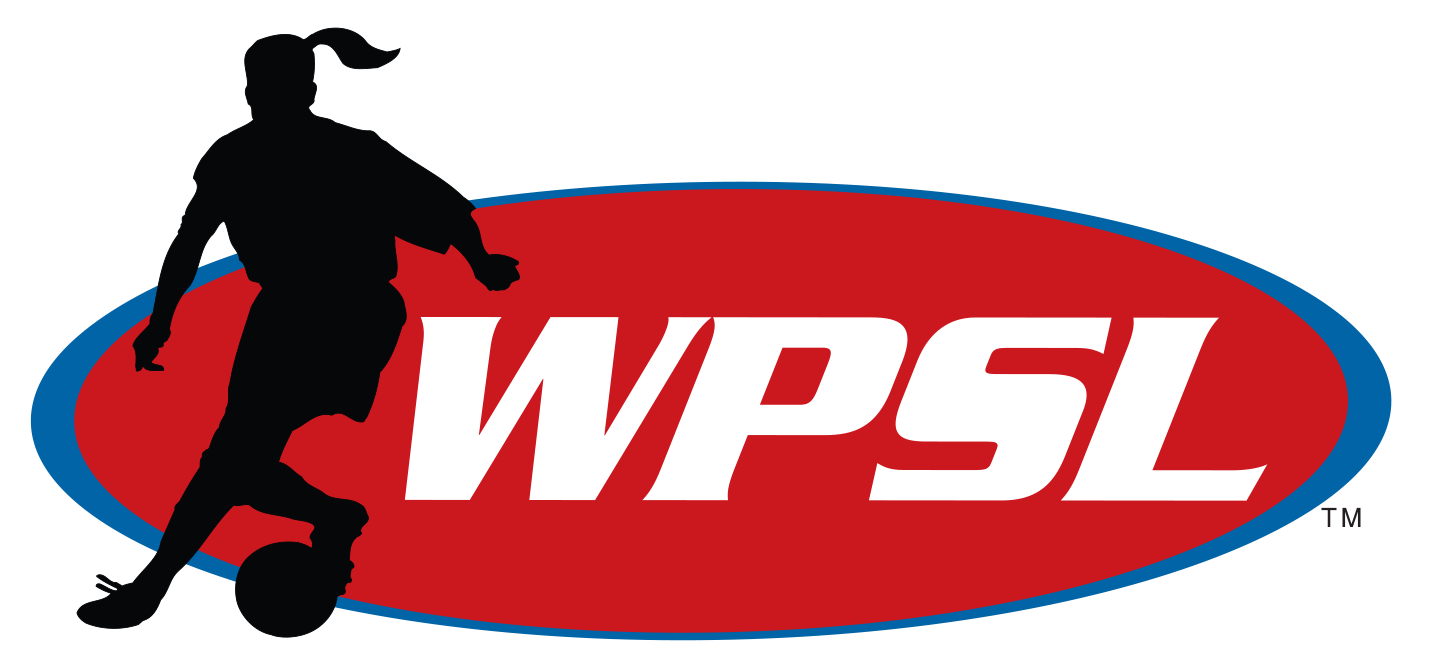- 865 Allian865 Alliance
- AAFCAAFC Lumberjills
- AcademicaAcademica Soccer Club
- AGCFAGC Football
- AHFCRAHFC Royals
- AHFCAHFC Royals Women
- AFCAlabama FC
- ARAlbany Rush
- ASDALBION San Diego
- AFCAlbuquerque FC
- ARAlexandria Reds
- ACSAlta California Sol
- ACAmbassadors Cleveland
- Arizona ArArizona Arsenal Soccer Club
- ASBArlington Soccer Blue
- ASRArlington Soccer Red
- ACSCAsheville City SC
- ASCAthena Soccer Club
- Atlanta FiAtlanta Fire United
- ACFCAtomic City FC
- AustinRiseAustin Rise FC
- BatCo FCBat Country FC
- BRUBaton Rouge United
- BUSCBavarian United SC
- BASBay Area Surf
- BCUBC United
- BFCBeach Futbol Club
- BeadlingSCBeadling Soccer Club
- BD FCBlack Diamond FC
- BRSCBluffton Rush SC
- BCUBoulder County United
- BSCBreakaway SC
- BrooklynBrooklyn City F.C.
- BBBroomfield Burn
- BRSCBRSC United
- CSCalifornia Storm
- CCCCape Coral Cyclones
- CFCCarolina FC
- CIUCentral Illinois United
- CUCentury United
- Red DevilsChallenge Red Devils
- CFCharleston Fleet FC
- CDACharlotte Development Academy
- CECharlotte Eagles
- CFCChattanooga FC
- CRWChattanooga Red Wolves SC
- CCSCChicago City SC
- CDLChicago Dutch Lions FC
- CH ACChicago House AC
- CK FCChicago KICS Football Club
- CRSRChicago Red Stars Reserves
- CRU23Chicago Rush U23
- CSFCCincinnati Sirens FC
- SSCCity SC
- CSC UtahCity SC Utah
- CSCClarkstown Soccer Club
- CE SAClassics Elite SA
- CKFCClermont Kicks FC
- CACleveland Ambassadors
- BlizzardColorado Blizzard FC
- CPColorado Pride
- CRWColorado Rapids Women
- CRColorado Rush
- CEFCColumbus Eagles FC
- CFC SACorinthians FC of San Antonio
- CorktownCorktown WFC
- CJCroatia Juniors
- CTRCT Rush
- CUFCCultures United Football Club
- DCFCDade County Football Club
- DFFCDakota Fusion FC
- DDLDayton Dutch Lions FC
- DECATURDECATUR FC
- DODelaware Ospreys
- DMMWDes Moines Menace Women
- DDFCDesert Dreams F.C.
- DVWDiablo Valley Wolves
- DEFFCDistrict Elite FC
- DKSCDKSC BADTOP
- DU SCDowntown United Soccer Club
- EFCEastside FC
- EDAIIEDA II
- EPSEl Paso Surf
- EDAElite Development Academy
- EFEmerald Force
- EREmpire Revs
- Erie FCErie FC
- ETFCAEugene Timbers FC Azul
- FCAFC Arizona
- FCBFC Berlin
- FCB WomenFC Birmingham
- FCDWFC Dallas Women
- FCDFC Davis
- FC DFC Dayton
- FCGSFC Golden State
- MTFC Milwaukee Torrent
- FCMFC Monmouth
- N WolvesFC Nashville Wolves
- FCOFC Omega
- FPWFC Premier
- FCPFC Pride
- FCPFC PrimeTime
- SpiritFC Spirit
- FCSFC Surge
- FCTWFC Tucson
- FCTFC Tucson
- FC UnitedFC United Cedar Rapids
- FCWFC Wichita
- FSCFever SC
- FIFire & Ice SC
- FSC98Fire SC 98
- FlatironsFlatirons Rush
- FESAFlorida Elite Soccer Academy
- FGCDLFCFlorida Gulf Coast Dutch Lions FC
- FKFlorida Krush
- FPF.C.Florida Premier F.C.
- FPFCFlorida Premier FC
- FRFlorida Roots
- FTSCFlorida Tropics SC
- FFCForce FC New York
- FWVFort Worth Vaqueras
- FSAFox Soccer Academy
- FAFram Ajax
- FFFCFresno Freeze FC
- FusionFusion FC
- FutboleraFutbolera Select
- GIGeorgia Impact
- GToledo FCGreater Toledo Futbol Club
- GBGGreen Bay Glory
- GEAGretna Elite Academy
- GriffinsGriffins FC
- GFCGriffins FC
- GCUGulf Coast United
- HFCHattiesburg FC
- HFCHershey FC
- HFCTHEX FC Tempest
- CobrasIllinois Lady Cobras
- ILCFCImperial Lake Charles FC
- ICIndependence Central
- INIndependence North
- ISIndependence South
- IDF.CIndios Denver FC
- ISFCIndy Saints FC
- IACInter AC (Calcio Unito Internazionale AC)
- ICAAInternacional Club Atletico
- ICAGInternacional Club Atletico CA/G
- ISCInternationals SC
- Iowa RaptoIowa Raptors FC
- IRIron Rose FC
- ISCGISC Gunners FC
- Jksn IgnJackson Ignite
- JacksonvilJacksonville Armada FC
- Joy AthletJoy AC
- JunctionJunction FC
- KCCIIKansas City Current II
- KCCKC Courage
- KFCKeystone FC
- KCUKingston Capitals
- LAKRLA Krewe Rush
- LR FCLa Roca FC
- LASLA Surf Soccer Club
- LVFCLA Villa FC
- LSFCLadies Steel FC (UPSL)
- LVFCLady Victory FC
- LamorindaLamorinda United
- LVLLas Vegas Legends
- LVQ11Las Vegas Q11
- LW76Legacy W76
- LFCLegends FC
- LRRLittle Rock Rangers
- LSCLonestar SC
- LIFLong Island Fury
- Lou FuszLou Fusz Athletic
- LVURLVU Rush
- Manitou FCManitou F.C.
- MUSCMankato United Soccer Club
- MFCSMarin Football Club Siren
- MFAFCMatch Fit Academy FC
- McLeanMcLean Soccer
- MLMemphis Lobos
- MVHFCMerrimack Valley Hawks FC
- MUFCMiami United FC
- MuskratsMidwest Select SA Muskrats
- MC AFCMilwaukee City AFC
- MDLFCMinnesota Dutch Lions FC
- MTAMinnesota Thunder
- MK FCMISS KICK FC
- MBCSMississippi Blues SC
- MO ReignMissouri Reign
- MNBFCMN Bliss FC
- MCFCMotor City FC
- MVLAWMVLA Wolves
- Napa ValleNapa Valley 1839 FC
- NRFCNashville Rhythm FC
- NCFCNCFC
- NRFANeuse River Futbol Alliance
- NFCNevada Futbol Club
- NJANew Jersey Alliance FC
- NYACNew York Athletic Club
- NYDLFCNew York Dutch Lions FC
- NYSNew York Shockers
- N1812Niagara 1812
- NJWSCCSNJ Wizards SC
- NASCNorth Alabama SC
- NCFNorth Carolina Fusion U-23
- NCRNorthern Colorado Rain FC
- NUUNorthern Utah United
- NSAU23NSA U23
- OCUOak City United
- ODFCUSAODFC Cesena
- OCFCOklahoma City FC
- OPSAMOPSA Magic
- OSAOSA XF
- PACPA Classics
- PACNWPacNW
- PPateadores
- PCMOBAPeachtree City MOBA
- PFPenn Fusion SA
- PFCAPensacola FC
- PFCAPensacola FC Academy
- PCPeoria City
- PLSPhiladelphia Lone Star FC
- PUNLPhiladelphia Ukrainian Nationals - Liberty
- PHXHFCPHX Heat FC
- PHSCPittsburgh Hotspurs FC
- PNSCPlayers North Soccer Club
- PSCPlayers SC
- PRPleasanton RAGE
- PC FCPort City FC
- PTFCIIPortland Thorns FC II
- PDMPrimero de Mayo
- PSAPSA Monmouth
- PSD APSD Academy
- PRPFCPuerto Rico Pride FC
- QC RushQuad Cities Rush
- RFCRADD FC
- RLFCRangers Ladies FC
- RUACReading United A.C.
- RCNJReal Central NJ
- RERebels Empire
- RSCRebels Soccer Club
- RIRFCRI Rogues FC
- RNYFCRochester New York FC
- RAZRoyals AZ
- URSARSL Southern Arizona
- SLSGSCSaint Louis Scott Gallagher SC
- SSCSalvo SC
- SA RunnersSan Antonio Runners
- SASSCSan Antonio Surf
- SDDSan Diego Dons
- SDPLSan Diego Parceiro
- SDSSan Diego SeaLions
- SDSSan Diego Strikers
- SDSSan Diego Surf
- SFESan Francisco Elite Soccer Club
- SFNSan Francisco Nighthawks
- SRFCSan Ramon FC
- SMSSCSanta Maria Synergy SC
- SSSCSavannah Spirit SC
- SCDSSC del Sol
- SCUBSC United Bantams
- SRFCSeattle Reign FC II
- Seminole ISeminole Ice
- SFGSFG Lady Demize
- SUShreveport United
- SFC92Side FC 92
- SC SolSioux City Sol
- Sioux FallSioux Falls City FC
- SJEBFCSJEB FC
- SCUFCSo Cal Union FC
- SoCalSoCal Dutch Lions FC
- SCRFCSoCal FC
- SCRFCSoCal Reds FC
- SHAFCSoccer House Academy FC
- SCFCSoda City FC
- SCASouthern California Eagles
- SSASouthern Soccer Academy
- SSFCSouthStar FC
- SFCBSouthStar FC Black
- SSCSSpokane SC Shadow
- SCTSporting CT
- SSWSporting South Walton
- SPSASportsParadize Soccer Academy
- SLLSt Louis Lions
- St. CroixSt. Croix Legacy
- STASTA
- SunflowerSunflower State FC
- SUSASUSA FC
- TBRTampa Bay Rowdies
- TBUTampa Bay United
- TBDTBD
- Boca BlastTeam Boca Blast
- TSTexas Spurs FC
- TTTexas Titans
- HAThe Houston Aces
- TTFCThe Town FC
- THUSCTHUSC Diamonds
- TLHRTLH Reckoning
- TempoTN Tempo FC
- TFCTorch FC
- TSSFCRTSS FC Rovers
- TTIBTTi Bluebonnets
- TSCTulsa Soccer Club
- UFAUFA Gunners
- UK FCUK F.C.
- U10FCUnion 10 FC
- UKCUnion KC
- USAUnited Soccer Alliance
- UAUtah Arrows SC
- Utah AvalaUtah Avalanche
- URUtah Royals
- URFCRUtah Royals FC Reserves
- USUtah Surf
- VSCCVale SC
- VIFCVancouver Island FC
- VTSSRVancouver TSS Rovers
- VVVancouver Victory FC
- VTFVermont Fusion
- VBCFCVirginia Beach City FC
- WFCWake FC
- WDLFCWashington Dutch Lions FC
- WSRWashington Spirit Reserves
- West FloriWest Florida Flames
- WMUWest-Mont United
- WUFCWestchester United F.C.
- WMFCWestside Metros FC
- WFCCWFC Charlotte
- WPSLWomen's Premier Soccer League 2
UTAH RED DEVILS FACED THE U.S. DEAF WOMEN'S NATIONAL TEAM IN END OF SEASON FRIENDLY
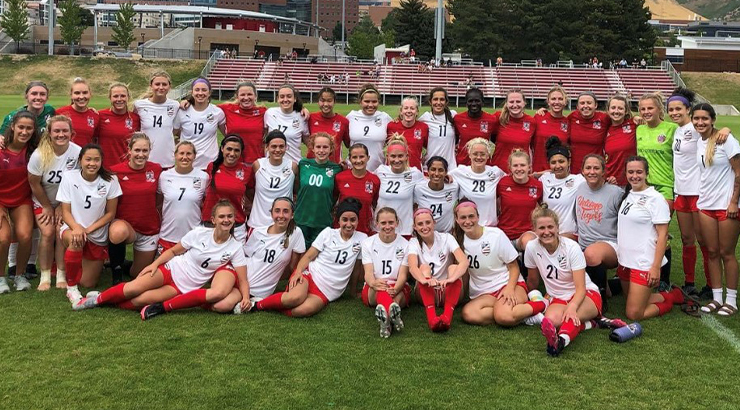
Photo Credits - Utah Red Devils Media
For as long as the beautiful game has been played, coaches have been loudly imploring players to communicate with each other on the field.
Turn! Time! Man on! Communicate!
The players and coaches of the U.S. Deaf Women’s National Team do not have the luxury of verbal communication during a match most take for granted. What would transpire if the two worlds collided on the field?
Last Wednesday, on July 28, the Utah Red Devils were able to experience this opportunity as they joined the USDWNT on the field in an exhibition match held at the University of Utah.
“I was absolutely blown away how well they [USDWNT] were able to communicate on the field non-verbally,” Dennis Burrows Red Devils head coach said. “The awareness these players have on the field is just incredible. I’ve never really seen anything like that.”
For the players on the USDWNT playing without verbal communication is just another part of the game.
“It’s just a different way of playing,” Katy Ward USDWNT co-captain said.
Ward played high-level youth soccer growing up in Atlanta, and collegiately at Appalachian State University. She is now an assistant coach of the women’s soccer team at the University of Texas at El Paso and sits on the U.S. Deaf Soccer board of directors as vice president of women’s soccer.
“No one on the field can hear really anything. They make it as level for everyone,” Ward said. “You have to be a lot more visually aware of what is going on around you. You can’t rely on people telling you what to do.”
Ward, a central midfielder, has cochlear implants that enable her to hear but when she plays with the USDWNT she is, as are all players, required to remove all hearing devices and undergoes hearing testing before the start of competition.
For head coach Amy Griffin and assistant Joy Fawcett, both iconic players for the U.S. Women’s National Team and accomplished coaches at the highest levels of women’s soccer, coaching deaf players required them to re-examine their approach to coaching.
“At practice, you can’t just yell across the field and tell someone to do something,” Griffin said. “Not everyone communicates the same way. Some sign. Some read lips. Some are verbal. Stopping a drill to go over a certain point is a little more involved.”
When Griffin was first approached about coaching the team in 2015, she had only a rudimentary knowledge of American Sign language after learning from a book while traveling to away matches so she could communicate with a deaf family member.
Griffin has since become more proficient, but not nearly enough in her estimation to fully convey head-of-the-moment instruction forcing them to rely on volunteer interpreters. Collectively they have developed soccer-specific signs that would not necessarily translate beyond the field and must be taught to each new player that joins the team.
“It was so different not hearing the other team talking, not hear the opposing coach yelling at players, telling them what to do,” Burrows said. “It’s completely different from what we are used to. I am truly in awe of how well they play.”
The friendly versus the Red Devils was the USDWNT’s first test as they begin preparations for the 2022 Deaflympics in Caxias do Sul, Brazil next May – where the USDWNT look to win a fourth gold medal.
Since the program began in 1999, they have yet to lose a match on the international stage – winning Deaflympics gold in 2005, 2009, and 2013, and the Women’s Deaf World Cup in 2012 and 2016. The team was forced to sit out the 2017 Deaflympics in Samsun, Turkey due to unaffordable team security costs in the politically unstable country.
This camp was the first opportunity for the coaching staff to assess the eligible player pool in more than two years. Twenty-nine players paid their own way to Salt Lake City for the five-day camp at the University of Utah—the largest turnout in the history of the program.
As a result of this impressive showing, Griffin was able to field two equal squads versus a full-strength Red Devils squad who just wrapped up its 2021 WPSL season.
“The Red Devils put us under a lot of pressure,” Griffin said. “We told our girls going in that the result of this game did not matter. The whole point of the game was to get a look at everyone in game situations so we could figure how and where everyone fits into the team.”
Despite the historic turnout for Griffin, a handful of potential players were not able to attend the camp – mainly due to financial limitations. These constraints will likely be present ahead of the Deaflympics next spring as players are responsible for paying their own way with their program not being funded.
“Not everyone who could go will be able to afford it, the girls do everything they can to raise funds,” Griffin said. “They sell t-shirts and get people to sponsor them. They sleep four to a room and take public transportation to games to keep costs down.”
Griffin estimates it will cost each player about $5,000 to represent their country in Brazil. Corporate funding is being sought to help defray the costs of the players, as well as increase the opportunity for the players to train together before competitions.
For Ward, whose playing career with the USDWNT will wind down after the 2022 Deaflympics, the opportunity to attend this camp and compete against the Red Devils was just good to be out playing with her teammates again.
“Playing on this team, with this group of girls, is the most special thing in the world. Like most of these girls, I grew up in the hearing world [and] the first time I was around people who looked like me, who had the same experiences as me, was when I started playing for this team,” Ward said.
Like Ward, this team creates a first-time opportunity for most players to experience an environment with others who are deaf or hearing impaired and this doesn’t stop at the soccer field. The team works in local deaf communities as much as possible to put on clinics for the deaf youth to interact with the USDWNT.
“Kids come to these clinics and interact with the team and see that there are people like them doing incredible things,” Griffin said. “For some of them, it is the first time they are around someone else who is deaf. Being part of that makes it all worth it.”
In Ward’s time as a USDWNT player, she has had roles models, who’s experienced what she has, to look up to and show her that even she can be successful.
“As a veteran player and a co-captain, that is the kind of culture I want to have here, and I want to continue to build,” Ward said. “It’s not just about winning on the field. It’s about deaf kids and kids with disabilities everywhere. There are not enough role models like that in the world.”
The importance and inspiration of the USDWNT were not lost on the Red Devil players either. After the match, Red Devils players lingered on the field taking pictures and socializing with the USWDNT players. One Red Devils player brought a national team jersey and had their entire team sign it as a memento of the match.
“Everyone wanted to play in this game, more than our league games even,” Burrows said. “Playing in it meant a lot to our team. It is a game they will always remember.”
Dennis Burrows and two of his players along with Amy Griffin and Joy Fawcett appeared on the WPSL Her Game Podcast ahead of this friendly. Click to Listen now and hear more about the Utah Red Devils and U.S. Deaf Women’s National Team. Or watch video version here.
For sponsorship information of the USDWNT please contact sanderson@usdeafsoccer.com.
 Author: Andrew Mosier, @AndrewMosier6 (Twitter)
Author: Andrew Mosier, @AndrewMosier6 (Twitter)
WPSL Contributor - West Region
 WPSL
WPSL 865 Alliance
865 Alliance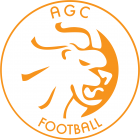 AGC Football
AGC Football AHFC Royals
AHFC Royals Albany Rush
Albany Rush ALBION San Diego
ALBION San Diego Alexandria Reds
Alexandria Reds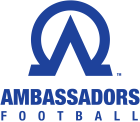 Ambassadors Cleveland
Ambassadors Cleveland Arizona Arsenal Soccer Club
Arizona Arsenal Soccer Club Arlington Soccer Blue
Arlington Soccer Blue Arlington Soccer Red
Arlington Soccer Red Atlanta Fire United
Atlanta Fire United Austin Rise FC
Austin Rise FC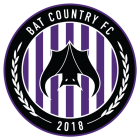 Bat Country FC
Bat Country FC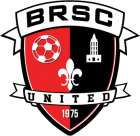 Baton Rouge United
Baton Rouge United Bavarian United SC
Bavarian United SC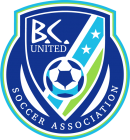 BC United
BC United Beach Futbol Club
Beach Futbol Club Beadling Soccer Club
Beadling Soccer Club Black Diamond FC
Black Diamond FC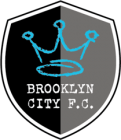 Brooklyn City F.C.
Brooklyn City F.C. Broomfield Burn
Broomfield Burn California Storm
California Storm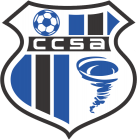 Cape Coral Cyclones
Cape Coral Cyclones Carolina FC
Carolina FC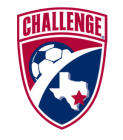 Challenge Red Devils
Challenge Red Devils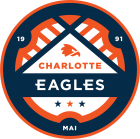 Charlotte Eagles
Charlotte Eagles Chattanooga FC
Chattanooga FC Chicago House AC
Chicago House AC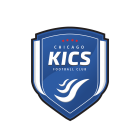 Chicago KICS Football Club
Chicago KICS Football Club City SC Utah
City SC Utah Clarkstown Soccer Club
Clarkstown Soccer Club Classics Elite SA
Classics Elite SA Cleveland Ambassadors
Cleveland Ambassadors Colorado Blizzard FC
Colorado Blizzard FC Colorado Pride
Colorado Pride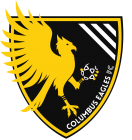 Columbus Eagles FC
Columbus Eagles FC Corinthians FC of San Antonio
Corinthians FC of San Antonio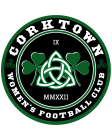 Corktown WFC
Corktown WFC CT Rush
CT Rush Dade County Football Club
Dade County Football Club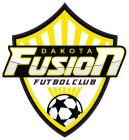 Dakota Fusion FC
Dakota Fusion FC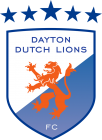 Dayton Dutch Lions FC
Dayton Dutch Lions FC DECATUR FC
DECATUR FC Delaware Ospreys
Delaware Ospreys Desert Dreams F.C.
Desert Dreams F.C. District Elite FC
District Elite FC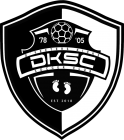 DKSC BADTOP
DKSC BADTOP Downtown United Soccer Club
Downtown United Soccer Club El Paso Surf
El Paso Surf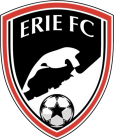 Erie FC
Erie FC FC Birmingham
FC Birmingham  FC Dallas Women
FC Dallas Women FC Davis
FC Davis FC Dayton
FC Dayton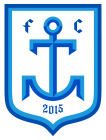 FC Milwaukee Torrent
FC Milwaukee Torrent FC Monmouth
FC Monmouth FC Nashville Wolves
FC Nashville Wolves FC Premier
FC Premier 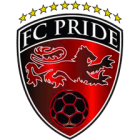 FC Pride
FC Pride FC PrimeTime
FC PrimeTime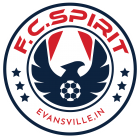 FC Spirit
FC Spirit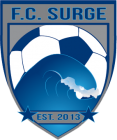 FC Surge
FC Surge FC Tucson
FC Tucson FC Wichita
FC Wichita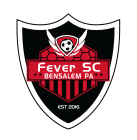 Fever SC
Fever SC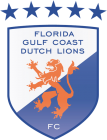 Florida Gulf Coast Dutch Lions FC
Florida Gulf Coast Dutch Lions FC Florida Krush
Florida Krush Florida Premier FC
Florida Premier FC Florida Roots
Florida Roots Force FC New York
Force FC New York Fort Worth Vaqueras
Fort Worth Vaqueras Fresno Freeze FC
Fresno Freeze FC Fusion FC
Fusion FC Futbolera Select
Futbolera Select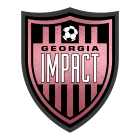 Georgia Impact
Georgia Impact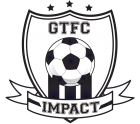 Greater Toledo Futbol Club
Greater Toledo Futbol Club Green Bay Glory
Green Bay Glory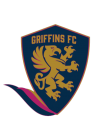 Griffins FC
Griffins FC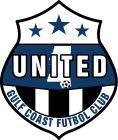 Gulf Coast United
Gulf Coast United Hattiesburg FC
Hattiesburg FC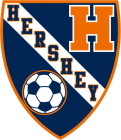 Hershey FC
Hershey FC HEX FC Tempest
HEX FC Tempest Indios Denver FC
Indios Denver FC Internationals SC
Internationals SC Iowa Raptors FC
Iowa Raptors FC Iron Rose FC
Iron Rose FC Jackson Ignite
Jackson Ignite Jacksonville Armada FC
Jacksonville Armada FC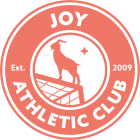 Joy AC
Joy AC Junction FC
Junction FC Kansas City Current II
Kansas City Current II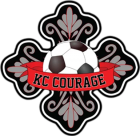 KC Courage
KC Courage Keystone FC
Keystone FC  Kingston Capitals
Kingston Capitals LA Krewe Rush
LA Krewe Rush La Roca FC
La Roca FC LA Surf Soccer Club
LA Surf Soccer Club Lamorinda United
Lamorinda United Lonestar SC
Lonestar SC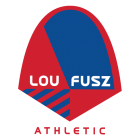 Lou Fusz Athletic
Lou Fusz Athletic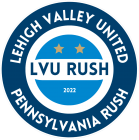 LVU Rush
LVU Rush Manitou F.C.
Manitou F.C.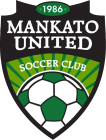 Mankato United Soccer Club
Mankato United Soccer Club McLean Soccer
McLean Soccer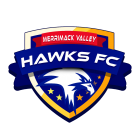 Merrimack Valley Hawks FC
Merrimack Valley Hawks FC Midwest Select SA Muskrats
Midwest Select SA Muskrats Milwaukee City AFC
Milwaukee City AFC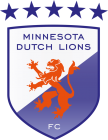 Minnesota Dutch Lions FC
Minnesota Dutch Lions FC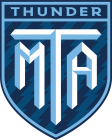 Minnesota Thunder
Minnesota Thunder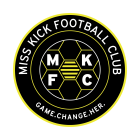 MISS KICK FC
MISS KICK FC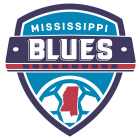 Mississippi Blues SC
Mississippi Blues SC Missouri Reign
Missouri Reign MN Bliss FC
MN Bliss FC Napa Valley 1839 FC
Napa Valley 1839 FC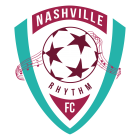 Nashville Rhythm FC
Nashville Rhythm FC NCFC
NCFC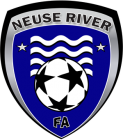 Neuse River Futbol Alliance
Neuse River Futbol Alliance Nevada Futbol Club
Nevada Futbol Club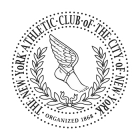 New York Athletic Club
New York Athletic Club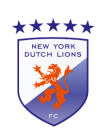 New York Dutch Lions FC
New York Dutch Lions FC New York Shockers
New York Shockers Niagara 1812
Niagara 1812 NJ Wizards SC
NJ Wizards SC  Northern Colorado Rain FC
Northern Colorado Rain FC Northern Utah United
Northern Utah United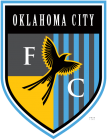 Oklahoma City FC
Oklahoma City FC PA Classics
PA Classics Penn Fusion SA
Penn Fusion SA Pensacola FC
Pensacola FC Pensacola FC Academy
Pensacola FC Academy Peoria City
Peoria City Philadelphia Ukrainian Nationals - Liberty
Philadelphia Ukrainian Nationals - Liberty PHX Heat FC
PHX Heat FC Port City FC
Port City FC Portland Thorns FC II
Portland Thorns FC II PSD Academy
PSD Academy Quad Cities Rush
Quad Cities Rush Reading United A.C.
Reading United A.C. Real Central NJ
Real Central NJ Rebels Soccer Club
Rebels Soccer Club RI Rogues FC
RI Rogues FC Rochester New York FC
Rochester New York FC Royals AZ
Royals AZ RSL Southern Arizona
RSL Southern Arizona  Saint Louis Scott Gallagher SC
Saint Louis Scott Gallagher SC Salvo SC
Salvo SC San Antonio Runners
San Antonio Runners San Diego Dons
San Diego Dons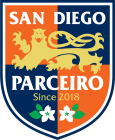 San Diego Parceiro
San Diego Parceiro 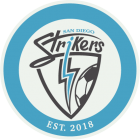 San Diego Strikers
San Diego Strikers San Diego Surf
San Diego Surf San Francisco Elite Soccer Club
San Francisco Elite Soccer Club San Francisco Nighthawks
San Francisco Nighthawks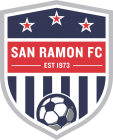 San Ramon FC
San Ramon FC SC del Sol
SC del Sol Seattle Reign FC II
Seattle Reign FC II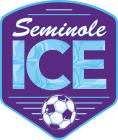 Seminole Ice
Seminole Ice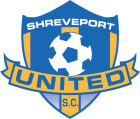 Shreveport United
Shreveport United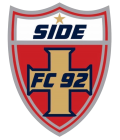 Side FC 92
Side FC 92 Sioux Falls City FC
Sioux Falls City FC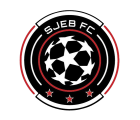 SJEB FC
SJEB FC So Cal Union FC
So Cal Union FC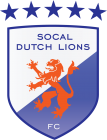 SoCal Dutch Lions FC
SoCal Dutch Lions FC Soda City FC
Soda City FC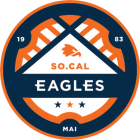 Southern California Eagles
Southern California Eagles SouthStar FC
SouthStar FC Spokane SC Shadow
Spokane SC Shadow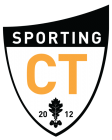 Sporting CT
Sporting CT St. Croix Legacy
St. Croix Legacy STA
STA  Sunflower State FC
Sunflower State FC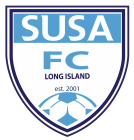 SUSA FC
SUSA FC The Town FC
The Town FC TLH Reckoning
TLH Reckoning TN Tempo FC
TN Tempo FC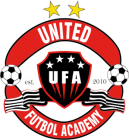 UFA Gunners
UFA Gunners UK F.C.
UK F.C. Union 10 FC
Union 10 FC Union KC
Union KC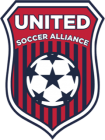 United Soccer Alliance
United Soccer Alliance Utah Avalanche
Utah Avalanche Utah Surf
Utah Surf  Vale SC
Vale SC Vancouver Victory FC
Vancouver Victory FC Washington Dutch Lions FC
Washington Dutch Lions FC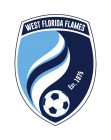 West Florida Flames
West Florida Flames West-Mont United
West-Mont United Westside Metros FC
Westside Metros FC WFC Charlotte
WFC Charlotte Women's Premier Soccer League 2
Women's Premier Soccer League 2